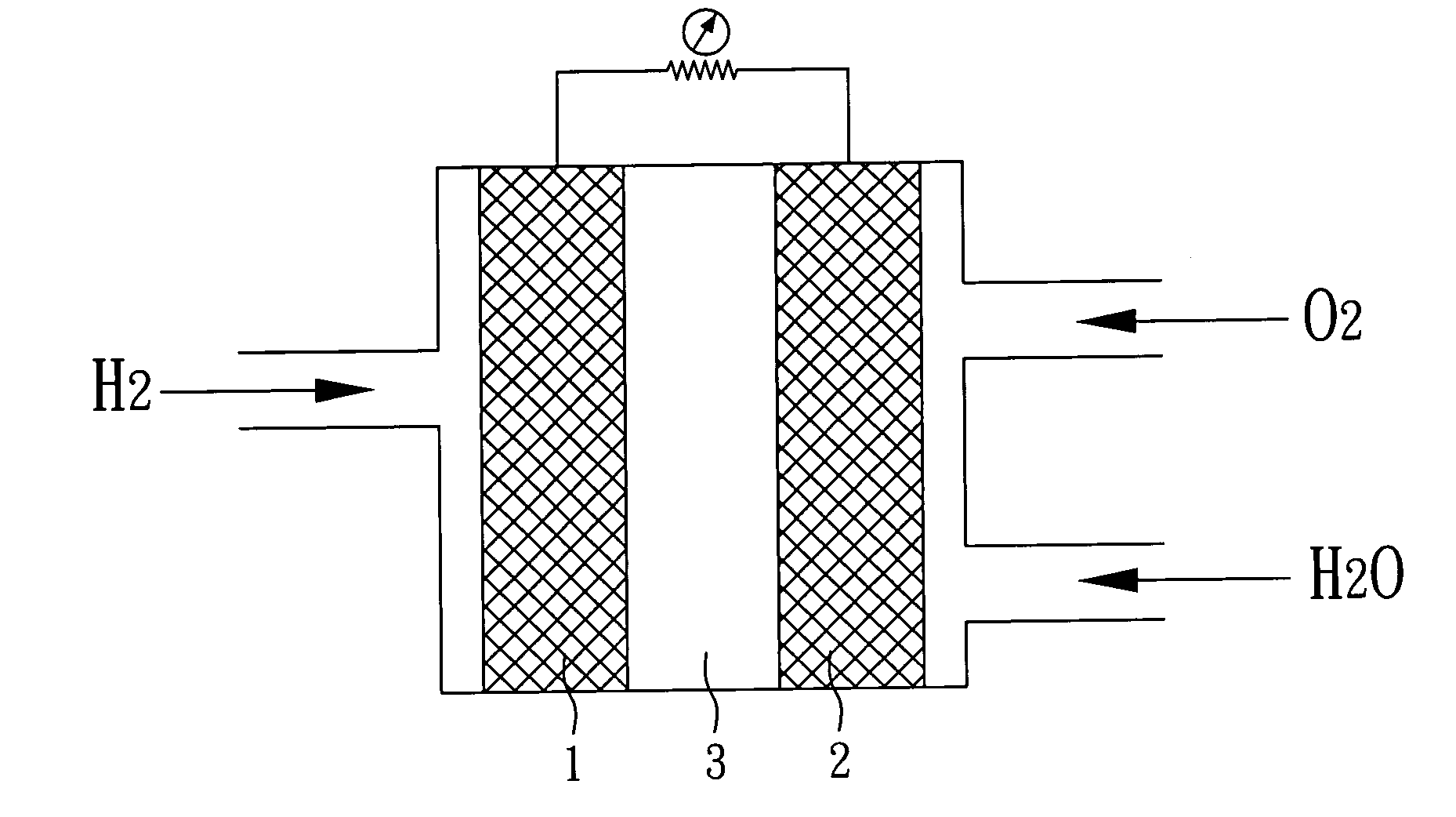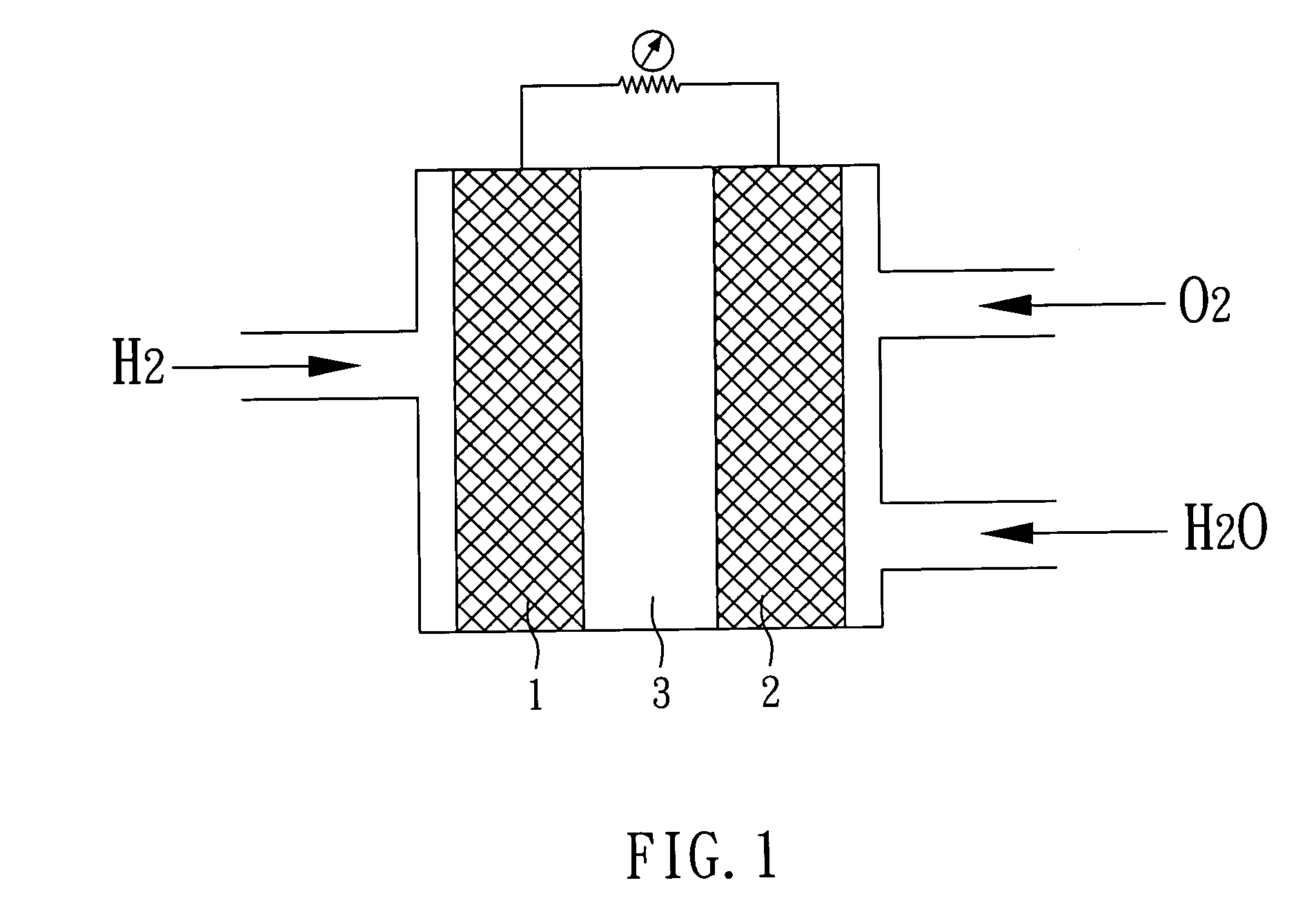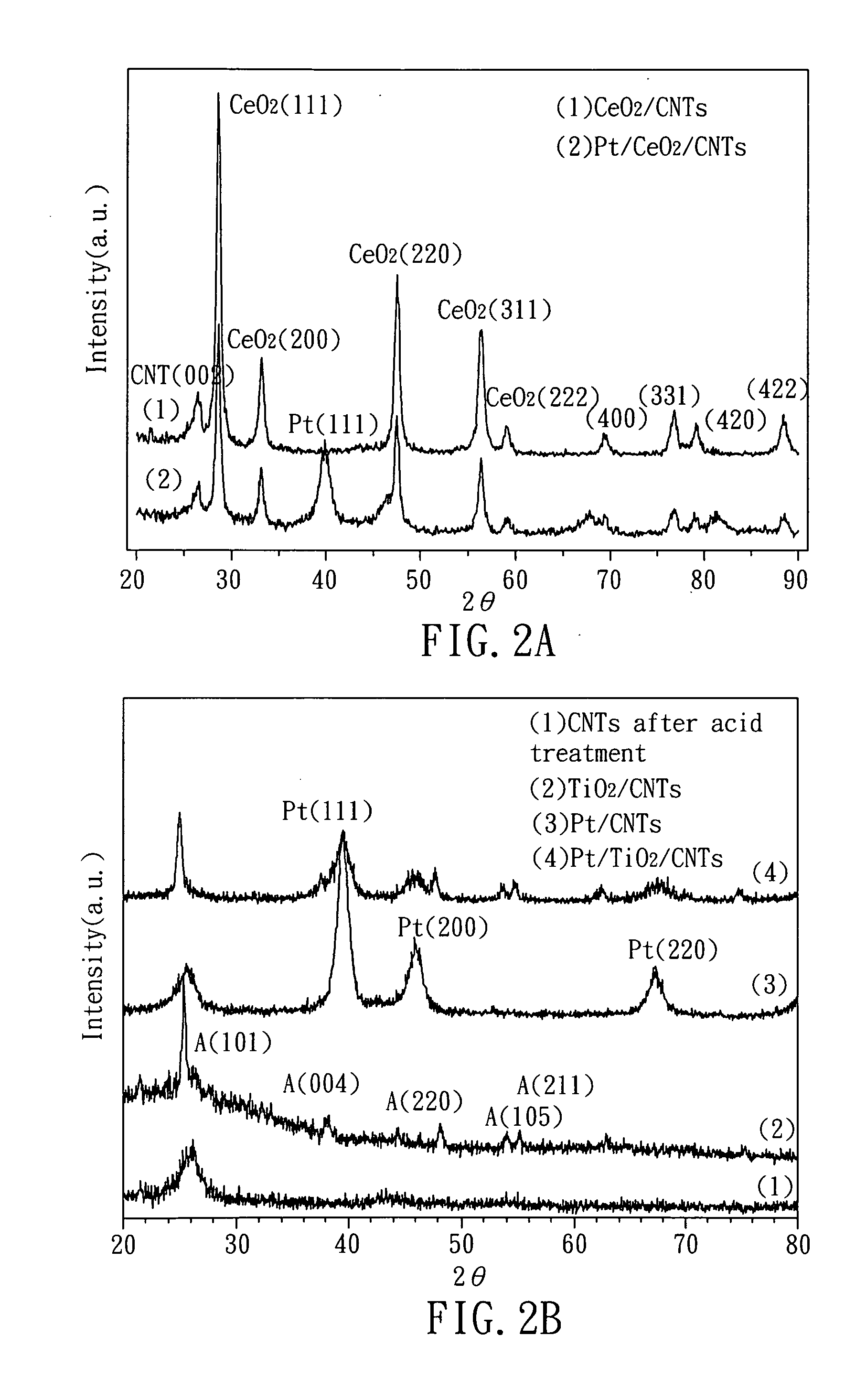Hybrid catalyst, method of fabricating the same, and fuel cell comprising the same
a hybrid catalyst and fuel cell technology, applied in the direction of cell components, metal/metal-oxide/metal-hydroxide catalysts, physical/chemical process catalysts, etc., can solve the problems of affecting the performance of direct methanol fuel cells, affecting and difficult industrial applications at large-scale manufacturing of pt—ru catalysts. achieve the effect of increasing the uniformity of platinum particles and increasing the efficiency of platinum catalysts
- Summary
- Abstract
- Description
- Claims
- Application Information
AI Technical Summary
Benefits of technology
Problems solved by technology
Method used
Image
Examples
example 1
[0029]First, 0.05 g of carbon nanotubes is added to 50 ml of 0.02M citric acid to provide a first solution (S1). Then, 5.8 ml of 0.05M Ce(NO3)3.6H2O is added to the first solution and stirred at room temperature (S2). The stirred first solution is dried, the residues (in a form of powder) are collected and are processed by heat-treatment at 700° C. for 1 hour (S3). After heat treatment, residues are dispersed in ethylene glycol (reducing agent) to provide a second solution (S4). Herein, the Ce(NO3)3.6H2O used at step (S2) acts as the catalyst precursor of the present example.
[0030]Subsequently, the second solution is heated to a temperature of 170° C. and H2PtCl6.6H2O (a platinum precursor) is added thereto, the pH value of the solution is then adjusted to about 8 with potassium hydroxide (S5). Finally, the solution is stirred for about 20 minutes to dry and the achieved powder is thus the hybrid catalyst with a structure of Pt / cerium oxide / carbon-nanotube of the present example.
[00...
example 2
[0032]First, 0.03 g of carbon nanotubes is added to 50 ml of isopropyl alcohol to provide a first solution (S1). Then, 50 ml of 0.007M [(CH3)2CHO]4Ti (titanium (IV) isopropoxide) is added to the first solution and stirred at room temperature (S2). The stirred first solution is dried, the residues (in a form of powder) are collected and are processed by heat-treatment at 1000° C. for 1 hour (S3). After heat treatment, residues are dispersed in ethylene glycol (reducing agent) to provide a second solution (S4). Herein, the [(CH3)2CHO]4Ti used at step (S2) acts as the catalyst precursor of the present example.
[0033]Subsequently, the second solution is heated to a temperature of 170° C. and H2PtCl6.6H2O (a platinum precursor) is added thereto, the pH value of the solution is then adjusted to about 8 with potassium hydroxide (S5). Finally, the solution is stirred for about 20 minutes to dry and the achieved powder is thus the hybrid catalyst with a structure of Pt / titanium oxide / carbon-n...
example 3
[0034]0.05 g of carbon nanotubes is added to 20 ml of deionized water (DI water) to provide a first solution (S1). Then, SnCl2.6H2O is added to the first solution and stirred at room temperature (S2). The stirred first solution is dried, the residues (in a form of powder) are collected and are processed by heat-treatment at 500° C. for 1 hour (S3). After heat treatment, residues are dispersed in ethylene glycol (reducing agent) to provide a second solution (S4). Herein, the SnCl2.6H2O used at step (S2) acts as the catalyst precursor of the present example.
[0035]Then, the second solution is heated to a temperature of 170° C. and H2PtCl6.6H2O (a platinum precursor) is added thereto, the pH value of the solution is then adjusted to about 8 with potassium hydroxide (S5). Finally, the solution is stirred for about 20 minutes to dry and consequently the achieved powder is the hybrid catalyst with a structure of Pt / tin oxide / carbon-nanotube of the present example.
PUM
| Property | Measurement | Unit |
|---|---|---|
| temperature | aaaaa | aaaaa |
| temperature | aaaaa | aaaaa |
| temperature | aaaaa | aaaaa |
Abstract
Description
Claims
Application Information
 Login to View More
Login to View More - R&D
- Intellectual Property
- Life Sciences
- Materials
- Tech Scout
- Unparalleled Data Quality
- Higher Quality Content
- 60% Fewer Hallucinations
Browse by: Latest US Patents, China's latest patents, Technical Efficacy Thesaurus, Application Domain, Technology Topic, Popular Technical Reports.
© 2025 PatSnap. All rights reserved.Legal|Privacy policy|Modern Slavery Act Transparency Statement|Sitemap|About US| Contact US: help@patsnap.com



